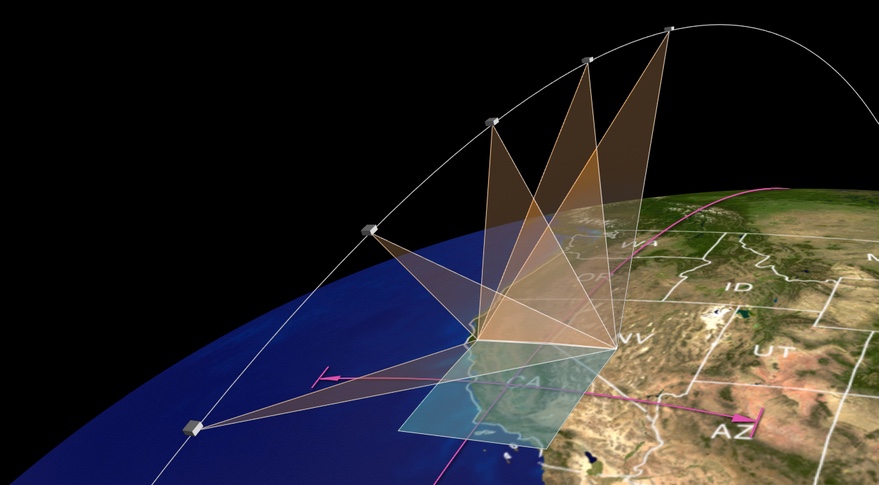HOUSTON — NASA is in talks with the Italian Space Agency to fly an Earth science instrument originally planned to go on a commercial smallsat.
At a meeting of the Earth Science Advisory Committee Aug. 2, Greg Stover, program manager for NASA’s Earth System Pathfinder Program, said NASA was in talks with the Italian Space Agency (ASI) to fly the Multi-Angle Imager for Aerosols (MAIA) instrument on a future Italian satellite.
“We’re working with the Italians to find an access to space for the Multi-Angle Imager to be able to launch that in the next couple of years,” he said. “We’re working the international agreements right now to do that.”
Karen St. Germain, NASA Earth science division director, added that NASA and ASI had not yet finalized that agreement. “This is an active discussion. We have signed agreements to be taking the next steps. It is not a completed agreement, though, but it is promising.”
MAIA is designed to study particulate matter air pollution in urban areas and help scientists understand their effects on human health. The mission is intended to operate in a polar orbit at an altitude of 740 kilometers.
MAIA was originally scheduled to fly on General Atomics’ Orbital Test Bed (OTB) 2 spacecraft. The agency awarded a $38.5 million contract to General Atomics Electromagnetic Systems (GA-EMS) in 2018 to host MAIA on the OTB-2 spacecraft. General Atomics was responsible for launching the satellite, and in February 2021 it awarded a contract to Firefly Aerospace for a launch on Firefly’s Alpha rocket.
Stover said that “we had to stop pursuing” a flight of MAIA but didn’t disclose why. NASA had not publicly announced it had terminated its contract with General Atomics. “The MAIA instrument will ride on a host satellite, to be selected by NASA at a future date,” the mission’s website currently states.
“NASA and General Atomics mutually agreed to end the MAIA Hosting contractual relationship in late 2021 due to overall technical alignment and programmatic challenges,” NASA spokesperson Jacob Richmond said Aug. 5. “We have been actively pursuing multiple paths including exploring a collaboration with the Italian Space Agency.”
He added that Charles Webb, at the time associate director for flight programs in the Earth sciences division, briefed the science community on a potential delay in the launch of MAIA at the American Meteorological Society annual meeting in January. At that time, though, the delay appeared linked to issues at Firefly Aerospace, whose largest shareholder, Noosphere Venture Partners, was divesting its stake at the request of the Committee on Foreign Investment in the United States.
“General Atomics is no longer hosting the MAIA instrument, as a result of a mutual decision between General Atomics and NASA,” Gregg Burgess, vice president of GA-EMS Space Systems, said in an Aug. 5 statement. “Residual hardware and software from that OTB spacecraft is being repurposed for use on other General Atomics spacecraft.”
General Atomics entered the smallsat industry through acquisitions of manufacturers Miltec in 2016 and the U.S. subsidiary of Surrey Satellite Technology Ltd. in 2017. The company has won several orders from NASA as well as the U.S. Space Force, Space Development Agency (SDA) and DARPA for smallsat missions.
OTB-2, though, is not the only General Atomics smallsat program to run into problems. The SDA’s Laser Interconnect and Networking Communications System (LINCS) mission featured two cubesats developed by General Atomics to test laser intersatellite links. However, the satellites tumbled after deployment on the SpaceX Transporter-2 rideshare mission last June and were unable to carry out the mission. Burgess, speaking in February, blamed the failure on “an issue with the launch vehicle” but did not elaborate.
General Atomics has also encountered problems with the development of the Total and Spectral solar Irradiance Sensor-2 (TSIS-2) spacecraft for NASA under a $32.9 million contract awarded in 2020. The company won the contract by offering its OTB bus at a cost 40% below that of Southwest Research Institute, the other bidder.
In a separate presentation at the Earth Science Advisory Committee meeting Aug. 2, Kathleen Boggs, acting associate director for flight programs in the Earth science division, said there had been “challenges” in the development of TSIS-2, noting unspecified issues identified by the mission’s standing review board.
“It is a new vendor, new to the space arena, so we felt this was a good opportunity to help a nascent space company,” she said. “We spent some more time with them. Goddard [Space Flight Center] helped work through their scheduling challenges. They now have what we think is a good schedule and are getting ready for mission CDR,” or critical design review, now scheduled for September.
